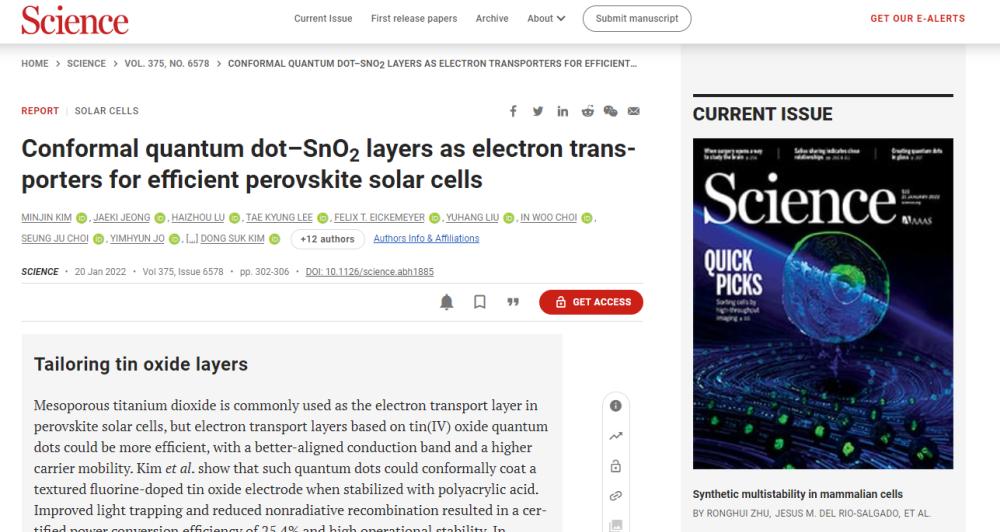Financial Associated Press (Shanghai, editor Huang Junzhi) news, perovskite solar cells have made great progress in a short period of time, but there is still room for improvement. Engineers have now added a layer of quantum dots to the recipe to create a more stable solar cell with near-record efficiency.
It is understood that there are several reasons for making effective solar cells with perovskite materials. Their films are able to effectively absorb the entire spectrum of visible light and are inexpensive, lightweight and flexible.
But there's a problem: perovskite solar cells have stability issues and degrade under real-world conditions, and their efficiency tends to decline as the cell area expands. In past studies, scientists have tried to improve stability by adding macromolecules, old pigments, two-dimensional additives, or chili pepper compounds.
In the new study, researchers at the Federal Institute of Technology in Lausanne (EPFL) and the Korea Energy Institute tested a new component, quantum dots. These tiny particles emit a specific color of light when they are illuminated, and have begun to be used in areas such as television and solar cells. The results of the study were published in the journal Science.

In this case, the team used quantum dots made of a type of tin oxide as the device's electron transport layer. This layer shuttles electrons produced by perovskites into the electrodes so that energy can be harnessed. Compared to the titanium dioxide material commonly used to make this layer, quantum dots improve the device's ability to capture light and reduce the reactions that sometimes occur between the two layers, which typically reduces efficiency.
All told, the team found that perovskite solar cells with quantum dot layers achieved an efficiency of 25.7 percent, just 0.1 percent lower than the current record of 0.08 square centimeters. The efficiency of larger solar cells is also good: the research team recorded an efficiency of 23.3% for a 1-square-centimeter cell, 21.7% for a 20-square-centimeter cell, and 20.6% for a 64-square-centimeter cell.